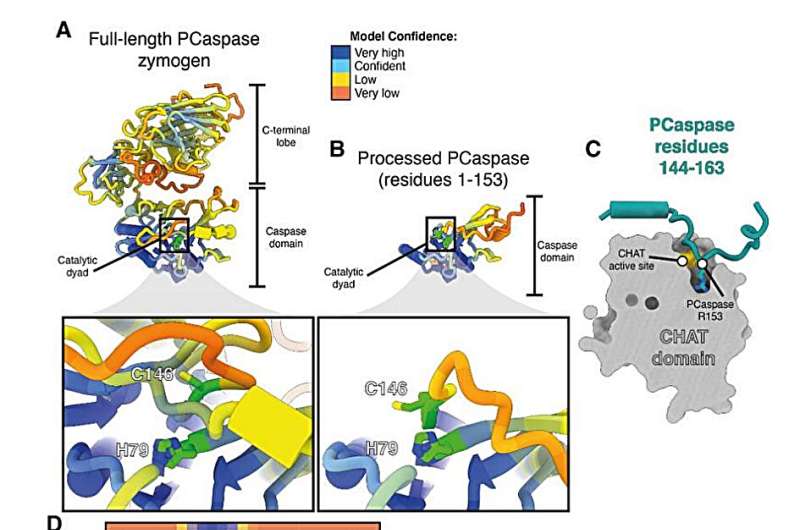This article has been reviewed according to Science X's editorial process and policies. Editors have highlighted the following attributes while ensuring the content's credibility:
fact-checked
trusted source
proofread
Newly discovered bacterial defense system functions as self-destruct button

Wageningen researchers have discovered a molecular self-destruct mechanism in a bacterium living on seaweed. With this mechanism the bacteria sacrifice themselves when they are infected, thus protecting their brothers and sisters from infections. By reprogramming this mechanism, researchers aim to utilize it in diagnostic (self-)tests. The study is published in Science.
The self-destruct mechanism belongs to the bacterial immune system known as CRISPR-Cas, which researchers have been widely studying for over a decade. This defense system is present in roughly half of all bacteria and exists in various forms.
The newly discovered system triggers self-destruction when it detects an invading virus. Normally, such a virus would exploit the bacterium as a production factory to replicate. By sacrificing itself, the bacterium prevents an outbreak. "We always suspected that bacteria could sacrifice themselves using this system, but now we have proof," says Raymond Staals, Associate Professor of Microbiology.
Shedding to pieces
When a virus injects its genetic material into a bacterium, the immune system sounds the alarm. "This particular immune system of the ocean bacterium distinguishes DNA or RNA of a virus from its own genetic material," explains Staals.
When Staals first studied this mechanism 13 years ago, he discovered that this CRISPR-Cas system cuts RNA. It seemed illogical since viruses continually produce new RNA. "What an inefficient system, I thought at the time," says Staals. "That never sat well with me."
Now it turns out that the RNA scissors are just one small step in the larger immune system. Ultimately, the immune system activates enzymes that uncontrollably destroy essential biomolecules—RNA, DNA, and proteins, killing the bacterium from the inside out.
Checkpoints
"What makes this whole system so fascinating are the checkpoints incorporated," says Staals. "This prevents the bacterium from 'accidentally' pressing that self-destruct button." The trick lies in a molecular domino effect with feedback loops that regulate the process. The dominoes start to fall when the bacterium detects an invader. It then produces signaling molecules that activate other proteins. These proteins, in turn, switch on the "big destroyer."
During this process, the cell also continuously breaks down molecules it produces, thus disrupting the domino effect. The self-destruct process proceeds only if the bacterium continuously recognizes foreign RNA or DNA. This prevents the bacterium from self-destructing due to a false alarm. "It's a bizarre chain reaction, similar to that of programmed cell death (apoptosis) in humans, but simpler," says Staals.
The precision of this newly discovered CRISPR-Cas system makes it ideal for developing diagnostic tests for diseases. In collaboration with TNO and Staals' spin-off company, Scope Biosciences, Wageningen researchers will work on developing diagnostic tests over the coming years.
They aim to create tests that can detect multiple targets, such as diseases, simultaneously and are easy to interpret. A Ph.D. candidate will take on that project starting in March. Staals expects to have the first diagnostic test in hand by 2025.
More information: Jurre A. Steens et al, Type III-B CRISPR-Cas cascade of proteolytic cleavages, Science (2024). DOI: 10.1126/science.adk0378
Provided by Wageningen University





















